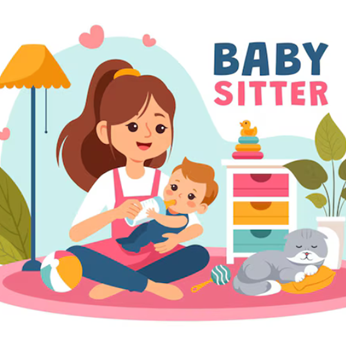Common allergies in kids explained
Many parents would have been worried about the allergies in their children; it is quite common in children from families that have a history of such reactions. The child may sneeze or cough a lot or may develop rashes, hives, stomachache, cramps and nausea after eating certain foods. Identifying childhood allergies early helps improve the quality of life of the child, reduces number of missed school days and would help you avoid using sick time and vacation time caring for the child.
Showing up as rashes in the skin or hives, with or without difficulty in breathing, sneezing, coughing, runny nose, itchy eyes and a stomach upset, common allergens include outdoor ones like tree pollen, plant pollen, insect bites and stings, indoor pollutants like pet and animal hair and fur, dust mites and molds, other irritants like cigarette smoke, perfume and car exhaust and foods like peanuts, eggs, milk and milk products. Two of the most common food allergies in children include milk protein or cow milk allergy and nuts allergy.
Children having milk allergy are given soy milk after consulting the doctor. However it is to be known that the mere avoidance of milk by the breastfeeding mother and child does not help; the baby could still experience allergy by taking foods like cereals, pasta, commercial baby foods, and bread and cakes that all contain milk. Consult a pediatrician regarding diagnosis of milk protein allergy.
Every 1 out of 100 children are affected by serious allergies to nuts that show up as asthma, eczema, hay fever or other allergic conditions; the risk is higher in children that have a family history of these diseases. It is found that consumption of peanuts during pregnancy could make the baby born susceptible to this allergy; the same applies to consumption of nuts by the breastfeeding mother. However recent research indicates that nuts taken in moderation during pregnancy and breastfeeding do not affect the baby.
It would be now advisable to have a look at some of the allergic reactions that a child could have.
Allergic rhinitis or hay fever is an allergy that shows up in children as a runny and itchy nose, sneezing, postnasal drip and nasal congestion; the child could also have itchy, watery, red eyes and chronic ear problems.
Nasal congestion or stuffy nose, another allergic reaction makes the child breathe through his/her mouth especially while sleeping; the child would miss on good quality sleep until the congestion and breathing from the mouth is treated. Breathing from the mouth would affect the growth of bones in the face and teeth; this calls for early diagnosis and treatment.
Allergies that cause ear infections lead to inflammation and fluid accumulation in the ear that result in decreased hearing, and poor speech. Earache, itching in the ear, popping and fullness call for the prompt attention of an allergist.
A discussion of allergies would be incomplete without food allergies; more than 6 million children in US suffer from this allergy. This calls for breastfeeding mothers to avoid eating foods their babies are allergic to. The most common allergies among children are peanuts and milk, with other triggers being eggs, fish, shellfish, crab, lobster, crayfish, shrimp, soy, tree nuts like pecans, cashews and walnuts and wheat; severe allergies from peanuts, tree nuts, fish and shellfish last a lifetime, while children outgrow the allergy for milk, eggs, soy and wheat.
Parents need to be aware of the possibility of anaphylaxis in a child with food allergy; it could cause impaired breathing, a sudden drop in blood pressure and send a body into shock; they are prescribed epinephrine to be administered with an auto-injector as soon as symptoms develop.
Inform your child’s school about his/her allergy and also give a copy of your child’s action plan to the school nurse or the administrative office. Discuss your child’s access to medication, including epinephrine in case of an emergency.

School pets that are furry could also cause allergic reaction in children that show up as allergy or asthma symptoms like coughing, difficulty breathing, a rash, runny nose or sneezing in school. Preventing allergies in school also means avoiding dust irritation by sitting away from the blackboard to avoid irritation from chalk dust.
Physical education and sports form an important part of a school day; if your child has asthma symptoms ensure that your child is taking the prescribed controller asthma medications on a regular basis, with medication administered by an inhaler prescribed to be used before exercise to control symptoms.
To conclude it is very important to make an appointment with an allergist in case you suspect your child has an allergy. Maintain an allergy diary helps to keep track of what symptoms your child experiences and the allergens.
Image Courtesy: Google
Take the next step toward your goals
Share your requirement and find the best care providers in your area
-
Looking for a caretaker’s job? Build your profile and get in touch with families in your vicinity.
-
Discover nannies, babysitters, cooks, housekeepers, pet sitters, and elder care under one roof.
-
Get all the support you need to run a successful care center.
-
Search for appropriate centers near you depending on your needs.
Care Corner Insights: Blog Library

Nanny vs. Daycare in Naperville, IL: What Works Best for Indian Working Couples?
Hey Naperville Parents! Balancing work and family life is no small feat—especially for Indian working couples trying to juggle careers, household responsibilities, and parenting. One of the biggest decisions you’ll face? Choosing between a nanny or

Housekeepers in Sugar Land, TX: Deep-Cleaning Checklists for Indian Homes
Housekeepers in Sugar Land, TX: Deep-Cleaning Checklists for Indian Homes Indian cooking = flavor + spices + love… but also oil splatters and stubborn stains. Time to reset! Degrease stovetops, chimneys, and exhaust fans. Scrub countertops, tiles,

12 Easy After-School Snack Ideas for Kids Who Get Hungry Quickly
School’s out, and the hunger hits hard! If your little ones come home ravenous and ready to raid the kitchen, you’re not alone. After-school snack time is prime time for refueling, recharging, and maybe even sneaking in a little nutrition. So here ar

Vegetarian Home Cook Services in Sunnyvale, CA: North & South Indian Meal Prep for Busy NRIs
Between work, family, and daily responsibilities, finding time to cook fresh meals can be difficult. That’s when a vegetarian home cook service in Sunnyvale makes life easier—bringing authentic North and South Indian dishes straight to your table. T

Hiring a Live-In Nanny in Plano, TX: A Practical Guide for NRI Households
For NRI families living in Plano, TX, raising children while managing work and household responsibilities can feel overwhelming. Many parents find that hiring a live-in nanny provides the right balance of support, convenience, and cultural comfort. U

Daycares in Fremont, CA for Indian Toddlers: Curriculum, Food Policies & Waitlists
You’ve probably met them — the parents at the park chatting about Montessori vs. play-based learning while handing their toddler a homemade paratha. The ones who ask every daycare in Fremont if they serve vegetarian meals. And yes, the ones who have

Babysitters in Jersey City, NJ for NRI Parents: Last-Minute, Weekend & Evening Options
You’ve probably seen them — the parents juggling grocery bags in one hand and a phone call to grandma in India in the other, while trying to keep their toddler from running into the road. The ones who cancel dinner plans because the babysitter bailed

Best Nanny Services in Edison, NJ for Indian Families: Costs, Language, and Cultural Fit
Edison, NJ, is home to one of the largest Indian communities in the U.S., and finding a nanny here often means looking for more than just childcare skills. For Indian families, cultural understanding, language fluency, and traditional values play a b

What Is Helicopter Parenting? How It Affects Children and Ways to Avoid It
You’ve probably seen them. The parents at the playground who shadow every move, wiping invisible germs off the slide before their child touches it. The ones who fill out job applications for their teens. And yes, the ones who email college professors

Are Weighted Blankets Safe for Children? Pros and Cons Explained
Weighted blankets have become a cozy trend in recent years. From helping adults sleep better to calming anxiety, they’ve earned a spot in many households. But when it comes to kids, especially the little ones, parents often ask: Are weighted blankets